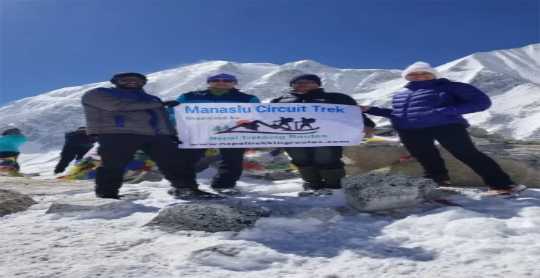Trekking in Nepal offers a unique and exhilarating experience for adventure seekers and nature lovers alike. The country is renowned for its majestic Himalayan mountain range, which includes Mount Everest, the world’s tallest peak, and many other towering summits. Nepal Trekking offers a diverse range of trekking routes, each catering to different levels of experience, from beginners to seasoned trekkers. Trekking in Nepal is not only a physical challenge but also a journey into rich cultural heritage, offering a deeper connection to the natural world and traditional Nepali communities.
Popular Trekking Routes in Nepal
One of the most iconic treks in Manaslu Circuit Trek is the Everest Base Camp Trek. This trail takes trekkers through rugged landscapes, Sherpa villages, and Buddhist monasteries, all the way to the base of Mount Everest, offering a once-in-a-lifetime view of the world’s highest peak. Another favorite is the Annapurna Circuit, which passes through subtropical forests, alpine meadows, and high mountain passes, with stunning views of the Annapurna massif. This route also offers trekkers a chance to experience the diversity of Nepal’s landscapes, from lowland rice terraces to alpine villages.
For those looking for a more remote experience, the Langtang Valley Trek provides an opportunity to explore the quieter regions of the Himalayas. Known for its picturesque scenery and the friendly Tamang and Lama communities, the Langtang region is less crowded than the Annapurna and Everest regions, making it an ideal choice for trekkers seeking solitude and tranquility.
The Ghorepani Poon Hill Trek is another popular route for beginners or those with limited time. It offers breathtaking sunrise views over the Annapurna and Dhaulagiri ranges, along with a pleasant walk through charming villages and rhododendron forests.
Cultural Experience and Local Hospitality
Trekking inAnnapurna base camp trek is not just about the mountains but also about immersing oneself in the local culture. Trekkers have the chance to interact with the Sherpa, Tamang, Gurung, and Tharu communities, learning about their traditions, daily life, and spiritual practices. Many trekking routes pass through ancient monasteries and prayer flags, and trekkers can witness the vibrant Tibetan Buddhist culture that has shaped much of Nepal’s highland regions.

The hospitality of the Nepali people is one of the highlights of the trekking experience. In remote villages, trekkers are often welcomed into family-run teahouses, where they can enjoy traditional Nepali food such as dal bhat (lentil soup with rice) and momo (dumplings). This warm hospitality, combined with the beautiful landscapes, makes Nepal a truly memorable trekking destination.
Best Time to Trek
The best times to trek in Annapurna circuit trek are during the spring (March to May) and autumn (September to November) seasons. These months offer stable weather, clear skies, and moderate temperatures, making it ideal for trekking at higher altitudes. The winter months (December to February) can be very cold, particularly in the higher altitudes, while the summer monsoon season (June to August) brings heavy rainfall, which can make trekking challenging and dangerous.
Conclusion
Trekking in Nepal is a must-do adventure for nature enthusiasts and outdoor adventurers. The country’s diverse landscapes, from the towering peaks of the Himalayas to the lush green hills, offer trekkers an unforgettable experience. Whether seeking a challenging trek to Everest Base Camp, a more relaxed journey to Poon Hill, or a quiet retreat in the Langtang Valley, Nepal’s trekking routes promise a transformative journey that combines physical challenge with rich cultural immersion. The kindness and hospitality of the local communities, combined with the breathtaking beauty of the mountains, make Nepal one of the best trekking destinations in the world.
